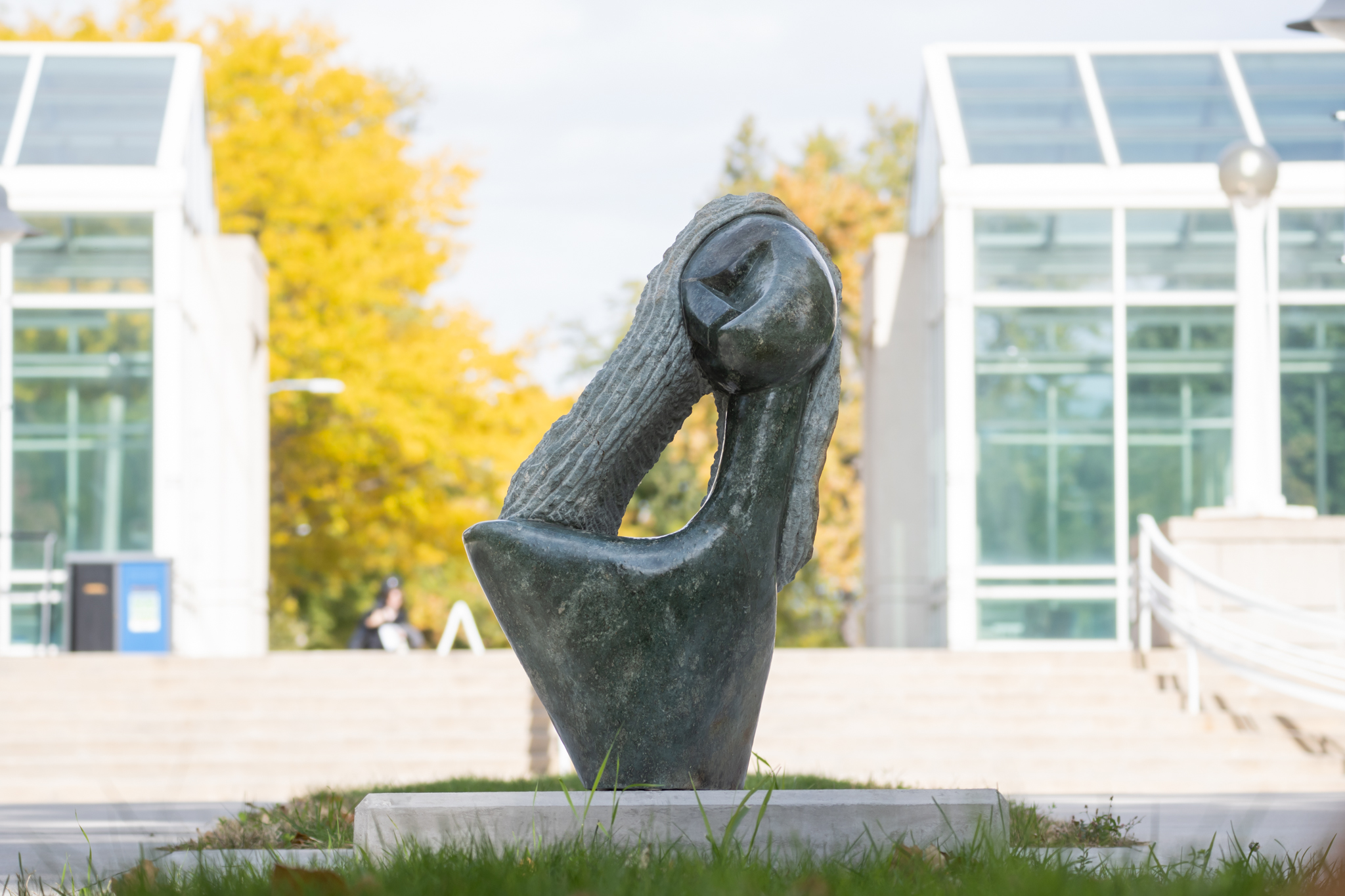You have probably walked by the many stone sculptures scattered throughout campus, but just what are they? It is a fair question, given that many lack an accompanying plaque and are subject to seemingly random placement. In fact, they all stem from the same tradition: Shona sculptures.
In 2009, Lawrence University received seven Shona sculptures from Milwaukee’s David Barnett Gallery. The Trout Museum of Art gifted six more just this year, consolidating a formidable collection on campus. They are placed most prominently on Hurvis Crossing and in front of the Conservatory, though they can be found in Memorial Hall, the Colman Hall Courtyard and the Riverwalk Trail, among other locations.
The Shona people of Zimbabwe are the primary participants in their country’s sculptural tradition. Their modern practice received its first impetus after World War II, being inaugurated by the artist Joram Mariga, known as the “Father of Zimbabwean Sculpture,” and encouraged by the English curator Frank McEwen. Shona sculptures include a certain subtleness, which requires an honest pause to fully appreciate and reminds us that there are no prerequisites for great art.
The sculptures are as different as they are alike. Some, such as Rangarirai Makunde’s “Resting Man” on Hurvis Crossing, emerge from the ground outdoors, with their human form only fully defined at the top. Others, such as Washington Msonza’s Traditional Dancer in Memorial Hall, are unabashedly humanesque, making their placement indoors more fitting.
The materials vary too, though they are usually made from some type of stone, including granite, sandstone, serpentine, steatite and verdite. The treatment of such materials differs even in individual sculptures. Two statues of women—one outside the conservatory and another on Hurvis Crossing—include rough and uneven hair attached to a smooth and glossed body.
Esau Karuru’s “Beggar” in Memorial Hall exemplifies the individual variety possible in a single statue. To evoke the subject’s poverty, the woman’s body is unevenly sculpted throughout. The imperfections add to the narrative, but are abandoned in the noticeably finished face, clarifying the destitution is limited to finances, not personal character.
Among the most striking sculptures is one between the Conservatory couches of the lower floor. The figure is frozen in dance, forming a geometric shape in an anatomically impossible fashion. The unease of the position contrasts nicely with solidity of the triangle it forms, offering a conflicting interpretation. Its placement too, in the middle of the ‘Conservatory student traffic,’ makes its appreciation more likely.
Indeed, most of the sculptures occupy an air of ambiguity, particularly in a grey area between humanity and the surrounding world. The hair is often elongated, while the hands and heads are particularly oversized—a typical trait of artwork throughout Africa. Realism is equally present in the often downwards facial expressions, viewable as a someone stuck in sullenness or in deep contemplation.
But what do we gain from having artwork from such a distant tradition on campus? By depicting fundamentally human scenes—dancing, resting, begging, celebrating—the sculptures retain a universality which is difficult to ignore. Their emergence from the stone block which encircles them posits them in our surrounding world as a natural feature as much as they are an artistic one. Frozen in movement, they serve as intermediaries between the active and still worlds, a balance which many of us could do with more often.



